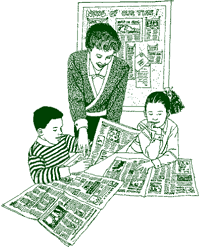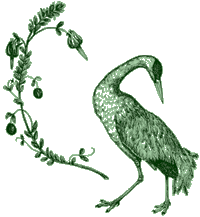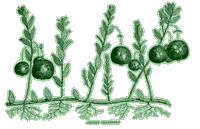 |
|
|||
Objectives Students will be able to:
Materials Dictionaries for defining unfamiliar vocabulary words Copies of the excerpts from George Agnew Chamberlain (1945-1956) included in this lesson Large mural/butcher paper and a variety of art materials (crayons, paints, markers, etc.) Making Connections The people and the places that are an integral part of what the region Down Jersey is all about have been captured and immortalized through George Agnew Chamberlain’s writing. Though written in the early to middle part of this century, many of his novels still are applicable to the essence of the region through his descriptive accounts of the area. The use of excerpts from George Agnew Chamberlain’s novels provides the opportunity for students to experience descriptive writing and use it as a model for creating their own written and visual interpretations of the unique natural settings from within the region. Background The Blue Book Chapter 1 – (link to Historic Themes and Resources) Provided by Ron Magill Mr. Chamberlain used southern New Jersey as a setting for several of his novels. In the 1950’s, two of these were made into motion pictures: Scudda Hoo, Scudda Hay, a farm story centered on two stubborn but noble mules, and his work Phantom Filly, the story of a race horse and its young owner, which was released in two different versions –– Home in Indiana and later April Love. A number of his books appeared as serials in the Saturday Evening Post during the 1920s and 30s. Procedure Warm Up The Activity
Wrap Up Action
Student participation in the process of interpretation of the writings of George Agnew Chamberlain and in the creation of the group illustration. Discuss the changes that have occurred over the past fifty years or so within the region(s) described in the passages included. How would George Agnew Chamberlain’s descriptions differ today? Are there still places in the Down Jersey region that are similar to those he wrote about? Extensions Have students utilize their passages as the starting point for a creative writing assignment. Each student (or group of students) should write a poem to accompany their mural that captures the essence of the passage. As a homework assignment, have students write about their favorite place in a descriptive manner, using George Agnew Chamberlain’s writing as a model. Have the students focus on the Celebrating Our Sense of Place theme and the film Down Jersey. The place they choose to write about could be a place that is presented in the film, their school yard, neighborhood, town, etc. For a further expansion, students could then use their descriptions as the basis for a short story. Please download the PDF for the complete Lesson Plan.
Other examples of descriptive writing about the southern New Jersey bayshore region. Excerpts from "The Red House" by George Agnew Chamberlain, Grosset & Dunlap, New York, N.Y., 1945 Pages 7-8 No view anywhere, only discoveries. And roads. Roads that cross each other or intertwine or break at right angles for no reason. Roads that sometimes make a complete circle, like a lost dog. Roads linked to obsolete and forgotten treasure; this is a marl pit, that to a redstone quarry and another to a bog of buried cedar. Wood roads to rare sand, to vanished cranberry patches and even to faint earthworks thrown up as far back as the Revolution. Roads that tunnel through laurel twenty feet high. Obliterated roads, studded with young pines, that end nowhere. Still other roads, wide open, that tumble downward and cease in surprise at the edge of an impassable void. Excerpts from "Midnight Boy," by George Agnew Chamberlain, The Bobbs-Merrill Company, Inc., Indianapolis and New York, 1949 Pages 7-8 Read these names. Ong’s Hat. Double Trouble. Bamber. Hospitality. Chatsworth. Mizpah. Hampton Gate. Milmay. Mount Misery. Retreat. Tabernacle. Atsion. Batsto. Penny Pot and Wading River. Weymouth, Gloucester and Martha’s Furnaces. Calico. Sooy Place. Jenkin’s Neck and Great Harbor River. Don’t go to an atlas to find out where they are. You can lay your palm flat on a road map of Southern New Jersey and it will cover them all — with a fat little finger to spare. They surround and pepper the wilderness of the Pines, a lost region under a veil of rutted trails as intricate as a cobweb. Deer play around all year long, until they crash wide-eyed into slaughter. Cranberry bogs blush purple in the spring and are jeweled with red in the fall. Don’t confuse the Pines with the Jersey Barrens, a like district sixty miles to the southwest across a belt of rich farmlands. The difference is principally a matter of ruins. The Barrens have none, while amid the Pines still stand the crumbling stacks of foundries that cast cannons for General George Washington and pulpmills so massive that it has taken a hundred years of pilfering to lower the pride of their thick stone walls. Here visitors wandering out of Chatsworth, the legendary capital of the Pines, are apt to stumble on the remains of an extensive establishment… Excerpts from "Scudda-Hoo! Scudda-Hay!," by George Agnew Chamberlain, Grosset & Dunlap, New York, 1946 Pages 13-14 The Jersey side of the delta of the Delaware is cut by tidal creeks that break right and left into guts, branches and runs. The creeks are navigable and in spite of having more twists than a flock of snakes they are roughly parallel. On their upper reaches each convexity is bordered with overhanging trees and every outward bulge is a marsh. Winding ditches like bayous break this alternating regularity, their deep narrow waters roofed over with alder, ash, fox grapes and mystery. Away from the creeks the signposts are spattered with Necks, frequently Back Neck, and any Neck means that the way you go in is the way you come out. Excerpts from "Overcoat Meeting," by George Agnew Chamberlain, A.S. Barnes and Company, New York, 1949 Pages 1-3 On its Jersey side alone the delta of the Delaware has more fingers than a peck of toads and here is a single cluster –– Alloways Creek, Deep Creek, Hope Creek, Madhorse Creek and Stowe Creek. Let not that word creek deceive you. These oily waterways, however narrow, are deep and black, twist like snakes, have a rise and fall up to five feet and when the tide comes tearing in they run uphill as fast as down. At their lower ends they whirl through vast marshes but their upper reaches are lost in the mystery of the Barrens. On the principle of the ascending notes of an octave a creek can become a gut, a gut a ditch, a ditch a branch, a branch a run and a run sucks life from a cripple or a spung. You can wet your feet in a spung, spit across a run, jump a branch, drown in a ditch and sink a ship in a creek. It would be pleasant to record that all of Deep Creek was as peaceful as the twists and turns that lay between Bald Eagle and Broken Elbow Farm, but let the truth prevail. Seven miles downstream lived a community whose members, for nine months in the year, were civil to each other and often met in Church. But from the day the trapping season opened until it ended no man said howdy to his neighbor nor would he allow his wife to say howdy since such friendliness might encourage the robbing of his muskrat and other traps… |

 of George Agnew Chamberlain as a catalyst, students can visualize the area he is describing.
of George Agnew Chamberlain as a catalyst, students can visualize the area he is describing. Assessment
Assessment The Pineys used to hog the whole of the lozenge between the Shore Road and the White Horse Pike. But no longer is that region a mystery; too many thoroughfares have let in the light. Not so with the Barrens farther south, an irregular sweep of country that has defied unveiling for a hundred years. Highways have been bored across it, but step off them on either side and it is as though you had passed through a wall and closed the door behind you. Seen from the air, this area seems compact, an even blot of forest pierced by the oases of a dozen farms, each distant from the rest and solitary. But to man on foot or on a horse it has diversity beyond belief. Bayous as sombrous as any Florida Everglades widen into creeks that narrow into runs. Marshes rise into sparsely wooded tablelands that plunge down unexpectedly into swales darkened by primeval trees.
The Pineys used to hog the whole of the lozenge between the Shore Road and the White Horse Pike. But no longer is that region a mystery; too many thoroughfares have let in the light. Not so with the Barrens farther south, an irregular sweep of country that has defied unveiling for a hundred years. Highways have been bored across it, but step off them on either side and it is as though you had passed through a wall and closed the door behind you. Seen from the air, this area seems compact, an even blot of forest pierced by the oases of a dozen farms, each distant from the rest and solitary. But to man on foot or on a horse it has diversity beyond belief. Bayous as sombrous as any Florida Everglades widen into creeks that narrow into runs. Marshes rise into sparsely wooded tablelands that plunge down unexpectedly into swales darkened by primeval trees. Blueberries grow thick and high. Scrub oak and jack pine blanket the billowing rises, giving them the uncurried look of an old nag’s winter coat. But in the swales and close to rushing water the trunks of tulip poplars grow fat and spindling saplings climb high.
Blueberries grow thick and high. Scrub oak and jack pine blanket the billowing rises, giving them the uncurried look of an old nag’s winter coat. But in the swales and close to rushing water the trunks of tulip poplars grow fat and spindling saplings climb high.  From the Maule’s Neck road dangled three lanes, all reaching for Barstow Creek. The most westerly, representing road’s end, served the Dominy farm. Downstream all was endless marsh, but heading the other way the creek took the course of a figure 3 with the indentation more of a loop than a sharp point. At the head of the loop had once stood the proud homestead of the Maules, but years ago the main house had burned down and now only the great barn remained. It formed an oasis in the midst of a tangled wilderness and within its cavernous interior old Anthony Maules, the last of his tribe, had established a makeshift residence. But beyond the wild hedgerow that marked the eastern boundary, disorder ceased with a startling suddenness. Here fanned out the trim fields of Robert Roarer McGill, divided by taut clean fences, and in the distance bright paint adorned the outbuildings as well as the frame addition to the original brick house.
From the Maule’s Neck road dangled three lanes, all reaching for Barstow Creek. The most westerly, representing road’s end, served the Dominy farm. Downstream all was endless marsh, but heading the other way the creek took the course of a figure 3 with the indentation more of a loop than a sharp point. At the head of the loop had once stood the proud homestead of the Maules, but years ago the main house had burned down and now only the great barn remained. It formed an oasis in the midst of a tangled wilderness and within its cavernous interior old Anthony Maules, the last of his tribe, had established a makeshift residence. But beyond the wild hedgerow that marked the eastern boundary, disorder ceased with a startling suddenness. Here fanned out the trim fields of Robert Roarer McGill, divided by taut clean fences, and in the distance bright paint adorned the outbuildings as well as the frame addition to the original brick house. Even far upstream Deep Creek never ceases twisting and alternates tree-crowned bluffs with tongues of marsh. The few houses are built on high land, but because no bluff ever faces another bluff they are seldom in sight of each other. It was so with the Sloane and Stark farms; though they lined opposite banks of the creek you had to walk, swim, or row to lay an eye on your neighbor, a condition that had bred friendship from generation to generation as naturally as a honey locust breeds sprouts…
Even far upstream Deep Creek never ceases twisting and alternates tree-crowned bluffs with tongues of marsh. The few houses are built on high land, but because no bluff ever faces another bluff they are seldom in sight of each other. It was so with the Sloane and Stark farms; though they lined opposite banks of the creek you had to walk, swim, or row to lay an eye on your neighbor, a condition that had bred friendship from generation to generation as naturally as a honey locust breeds sprouts…